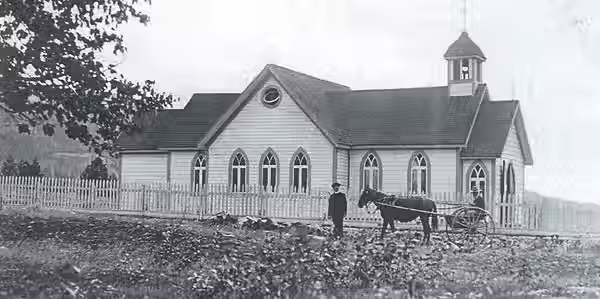Everyday Life
- SS Sicamous
- Aug 1, 2022
- 3 min read
Updated: Nov 13, 2023
Most houses in the early 20th Century were quite small, thus the rooms within were small and lacked space for storage. If the house was large it was because several people lived in it. Families could easily have 9 children. As a result of this, people were very creative with how they stored items so that they could be tucked away unnoticed and still be handy.

The ladies traveling case and the writing slope are two excellent examples of this. Everything a person needed for writing a letter could be contained within a 'slope'. Ink, pens and extra nibs, paper, stamps, envelopes, an address book, and often also a very small dictionary to check the spelling of words. It was easily transported if one was required to travel for business or pleasure. The ladies case was built to travel as well, containing such items as face powder, rouge, lipstick, face and hand cream, hair brush, clothes brush, hair ribbons and pins, and a small mirror. The pullout drawer in the base was built to hold brooches, necklaces, and perhaps a ring or two. A lady could tuck a hanky in as well. The top velvet covered lid could be pulled down over the bottles and brushes and serve as a writing slope. There was space for all the necessary items, and the ink bottle could be carried in with the makeup bottles. Some were extremely elaborate and might include two small candle holders to be attached at the side to light up dark rooms so you could see when doing your hair or putting your make up on.
The curling iron is a plug-in that you would need to have electricity in your house for. Previous to this style, a lady would have to heat the irons on the wood stove top. Kelowna had electricity in about 1908, but before that, household appliances used everyday had to be non-electric, such as the flat iron for ironing clothes which was heated on your coal or wood cook stove.

Telephone service had a bumpy start in the Okanagan. Many small private companies started their own service with but a few subscribers in the early 1900's. Sometimes a phone line was strung between only two people, or an owner and his business. For an in depth report on the changes and challenges phone systems went through before getting established in the Okanagan, read the Okanagan Historical Society's 59th Annual Report .

Throughout the ship you will find examples of items that were used on the S.S. Sicamous and others like it. You will also see pictures showing how the citizens of the Okanagan lived day to day. As you work your way through the displays, take a moment to reflect on how products and life style have changed in the past Century. Look closely at the photos displayed and notice the changes in the environment of the surroundings between then and now. Notice the difference in how people dressed.

One of the regular chores on farms with cows was to make butter. Once it was made, the butter could be put into the butter press and compacted to create an easy to use block (similar to what we buy today). For a great explanation of how this was done, and pictures of the equipment used, check out this link. milkyday.com/blog/2019/08/27/how-does-a-butter-churn-work/

For commercial dairies that shipped quantities of butter, look for the butter boxes in the kitchen display area on this deck. There are two in the ice cooler in the kitchen area. See if you can spot them. One is from Alberta and one labeled B.C. These boxes generally had a waxy lining to keep the butter off the wood, then it was poured in. When large quantities were being shipped, it was not wrapped in individual blocks as we buy it today.




Comments